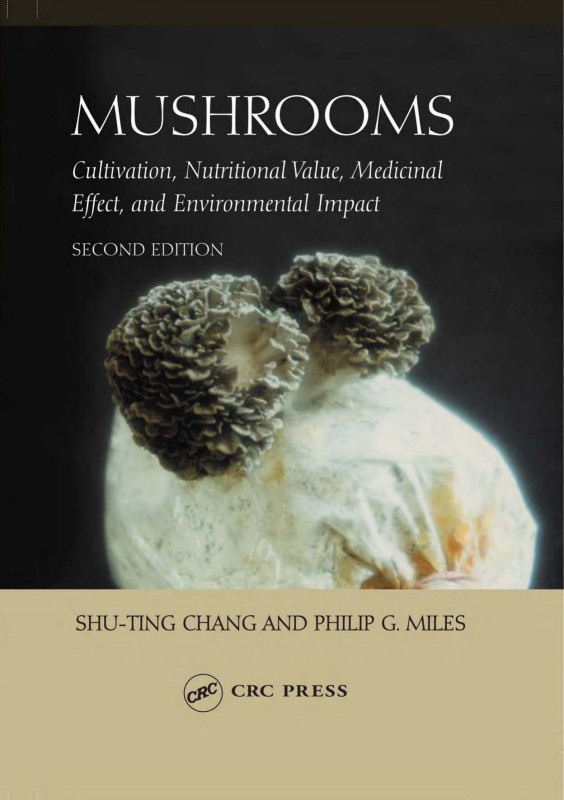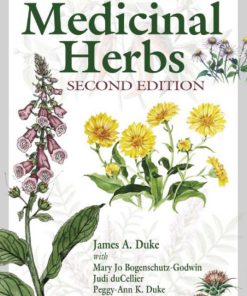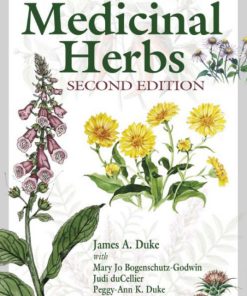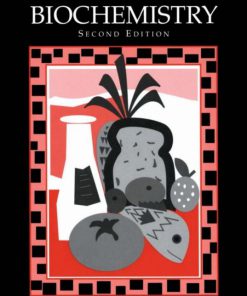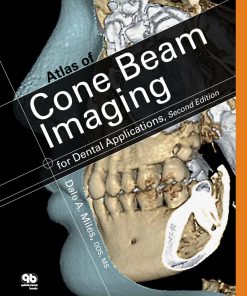Mushrooms Cultivation Nutritional Value Medicinal Effec and Environmental Impact 2nd Edition by Philip Miles, Shu Ting Chang 1138627518 9781138627512
$50.00 Original price was: $50.00.$25.00Current price is: $25.00.
Authors:Philip G. Miles; Shu-Ting Chang , Series:Medicine [9] , Tags:Medical; Alternative & Complementary Medicine; Science; Life Sciences; Botany; Chemistry; General , Author sort:Miles, Philip G. & Chang, Shu-Ting , Ids:Google; 9780203492086 , Languages:Languages:eng , Published:Published:Mar 2004 , Publisher:CRC Press , Comments:Comments:Since the publication of the first edition, important developments have emerged in modern mushroom biology and world mushroom production and products. The relationship of mushrooms with human welfare and the environment, medicinal properties of mushrooms, and the global marketing value of mushrooms and their products have all garnered great attenti
Mushrooms Cultivation Nutritional Value Medicinal Effec and Environmental Impact 2nd Edition by Philip Miles, Shu Ting Chang – Ebook PDF Instant Download/Delivery. 1138627518, 9781138627512
Full download Mushrooms Cultivation Nutritional Value Medicinal Effec and Environmental Impact 2nd Edition after payment

Product details:
ISBN 10: 1138627518
ISBN 13: 9781138627512
Author: Philip G. Miles; Shu-Ting Chang
Since the publication of the first edition, important developments have emerged in modern mushroom biology and world mushroom production and products. The relationship of mushrooms with human welfare and the environment, medicinal properties of mushrooms, and the global marketing value of mushrooms and their products have all garnered great attenti
Mushrooms Cultivation Nutritional Value Medicinal Effec and Environmental Impact 2nd Table of contents:
Chapter 1 Overview
I. Introduction
II. What Are Mushrooms?
A. Definition
B. Characteristics of Mushrooms
C. Categories of Mushrooms
D. Poisonous Mushrooms
1. Amanita-Type Poisoning
2. Muscarine-Type Poisoning
3. Psychotropic or Hallucinogenic Poisoning
4. Coprinus Poisoning
5. Poisoning from External Sources
III. Magnitude of Mushroom Species
IV. Ecological Importance of Mushrooms and Fungi in General
V. Collection and Classification of Mushrooms
A. Field Collection
B. Preserving the Collection
C. Precautions in the Use of Keys
VI. Justification for the Term Mushroom Biology
VII. Impact of Mushroom Biology on Human Welfare
VIII. Mushroom Science
A. Definition
B. Contributing Fields
1. Microbiology
2. Fermentation
3. Environmental Engineering
C. Mushroom Cultivation Technology
1. Concept
2. Phases of Mushroom Technology
IX. Development of Mushroom Science
X. Mushroom Biotechnology
XI. Nongreen Revolution
References
Chapter 2 The Nutritional Attributes of Edible Mushrooms
I. Introduction
II. Nutritional Attributes
A. Protein
B. Essential Amino Acids
C. Fat
D. Vitamins
E. Carbohydrate and Fiber
F. Minerals
G. Nucleic Acids
H. General Considerations
References
Chapter 3 Medicinal Value
I. Introduction
II. Medicinal Mushrooms
III. Effects of Medicinal Mushrooms
A. Hematological Effects
B. Antiviral Effects
C. Antitumor Effects
D. Antioxidant Activity
E. Cardiovascular and Renal Effects
F. Carcinogenicity of Mushrooms
G. Allergic Reaction to Spores
IV. General Considerations
References
Chapter 4 Overview of the Biology of Fungi
I. Introduction
II. The Fungi
A. Distinguishing Characteristics
B. Habitats
C. Role in Nature
D. Classification
III. Vegetative Structure of Fungi
A. Hyphae
1. Coenocytic Hyphae
2. Septate Hyphae
B. Organelles
C. Septal Structures
D. Secondary Mycelium of Basidiomycetes
E. Cell Walls
F. Unicellular Fungi
IV. Growth
A. Growth Kinetics of Unicellular Fungi
B. Filamentous Fungi
1. Measurement of Growth
V. Specialized Vegetative Structures
VI. Specialized Reproductive Structures
A. Sexual
B. Nonsexual
VII. Requirements for Growth
A. Nutritional Requirements
1. Carbon
2. Nitrogen
3. Minerals
4. Vitamins
B. Physical Requirements
1. Temperature
2. Light
3. Moisture
4. Aeration
5. Gravity
C. Transport and Translocation
1. Barriers to Transport
2. Passive and Active Transport
3. Translocation
VIII. Metabolism
A. Carbon
1. Respiration
B. Nitrogen
C. Lipids
IX. Reproduction
A. Introduction
B. Sexual
1. Homothallism
2. Heterothallism
3. Hormonal (Pheromonal) Control
C. Nonsexual
1. Types of Reproductive Units
D. Spore Germination
1. Factors Affecting Germination
2. Measurement
X. Relationship of Fungi with Other Organisms — Symbiosis
A. Parasitism
B. Mutualism
1. Lichens
2. Mycorrhiza
C. Saprophytism
XI. Chemical Composition of Fungi
A. Proximate Composition of Fungal Cells
B. Edible Mushrooms
References
Chapter 5 Substrate and Mycelial Growth
I. Introduction
II. General Nutritional Requirements for Mushroom Growth
III. Preparation of Substrate
A. Composting
1. Phase I Composting (Compost Preparation)
2. Phase II Composting (Compost Conditioning)
B. Microorganisms Involved during Composting
IV. Breakdown of Substrates by Extracellular Enzymes of Mushroom Mycelium
V. Genetic Improvement of Mushroom Culture in Regard to Substrate Utilization by Increased Production of Extracellular Enzymes
References
Chapter 6 Sexuality and the Genetics of Basidiomycetes
I. Discovery of Sexuality by Kniep and Bensaude
A. Tetrapolarity
B. Clamp Connection Formation
II. Other Early Findings in Sexuality in Basidiomycetes
A. Results of Tetrad Analysis
B. Geographical Races
C. Bipolarity
D. Illegitimate Matings
E. Buller Phenomenon (= Di-Mon Mating)
III. Reactions Other Than Those Forming Dikaryons
IV. Genetics of the Mating Type Loci and Sexual Morphogenesis in Schizophyllum commune
A. Schizophyllum commune
B. The A Locus of Schizophyllum commune
C. The Two-Locus Mating Type Factor Occurs Elsewhere
D. Findings from Molecular Genetic Studies
E. Sexual Morphogenesis
V. Genetics of Fungi
A. Induction of Mutants
1. Spontaneous Mutation Rates
2. Mutagenic Treatment: X Rays
3. Mutagenic Treatment: Ultraviolet
4. Mutagenic Treatment: Chemical
B. Isolation of Mutants
1. Total Isolation
2. Filtration Enrichment Method
3. Starvation Selection Method
4. Rescue Method
5. Selective Elimination of Prototrophs by Use of Chemical Method
C. Characterization of Mutants
1. Auxotrophic Mutants
2. Morphological Mutants
3. Developmental Mutants
4. Fruiting Mutants
D. Utilization of Methods of Molecular Biology in Genetic Studies of Fungi
1. Taxonomic Studies ?istinguishing Species and Strains
2. Demonstration of Genetic Variation in Natural Populations
3. Demonstration of Genetic Variation in Germplasm Collections
4. Linkage Studies
5. Confirmation of Crosses
6. Patent Labeling
References
Chapter 7 Mushroom Formation: Effects of Environmental, Nutritional, and Chemical Factors
I. Introduction
II. Development of Fruiting Bodies
A. Role of Fruiting Bodies
B. Variation in Fruiting Body Structure
1. Mushroom with Cap, Gills, Stipe, and Volva
2. Fruiting Bodies with No Stipe
3. Spore-Bearing Layer (Hymenium) Not in Gills, But in Pores
4. Funnel-Shaped Fruiting Body with Hymenial Layer in Folds on Underside of Body
C. Primordium Formation
D. Primordium Development
E. Types of Hyphae in Fruiting Bodies
F. Growth of Agaricus
III. Environmental Factors and Fruiting
A. Hydrogen Ion Concentration (pH)
B. Temperature
C. Aeration
D. Light
E. Gravity
IV. Nutritional Factors and Fruiting
A. Concentration of Nutrients
B. Nature of Carbohydrate
C. Nitrogen
D. Mineral Nutrition
E. Vitamins
V. Chemical Factors and Fruiting
A. Melanin Production and Perithecial Development in Podospora
B. Morphogenesis in Schizophyllum commune
C. Effect of Cyclic AMP
VI. Summary
References
Chapter 8 Mushroom Formation: Effects of Genetic Factors; Breeding
I. Introduction
II. Genetic Factors for Fruiting Imposed on the Mating Type Requirements
A. Schizophyllum commune
1. Multigenic Fruiting Factors
2. Morphological Fruiting Mutants
B. Lentinula
1. Various Stocks Display Fruiting Differences
III. Genetics of Fruiting of Polyporus ciliatus
A. No Subunits of Incompatibility Factors
B. Genetic Control of Monokaryotic Fruiting
IV. Monokaryotic Fruiting
A. Species in Which Monokaryotic Fruiting Has Been Reported
B. Induction
C. Relationship with Dikaryotic Fruiting
D. Potential in Mushroom Cultivation
V. Breeding for Desired Mushroom Features
A. Extension of Temperature Range
B. Utilization of Substrates
1. Use of Waste Substrates
2. Increased Yield
C. Sporeless Fruiting Bodies
1. Why Desirable?
2. Methods Used to Obtain
D. General Techniques of Breeding for Strain Improvement
1. Establishment of Cultures
2. Maintenance of Cultures
3. Characterization of Monosporous Mycelia
4. Selection of Recombinants
References
Chapter 9 Mushroom Formation: Effect of Pests and Diseases in Mushroom Cultivation
I. Introduction
A. History of Mushroom Cultivation and Diseases
1. Outdoor Cultivation
2. Indoor Cultivation with Pure Culture Spawn
II. Viral Diseases
A. History
B. Symptoms
C. Diagnosis
D. Virus Morphology
E. Epidemiology
F. Patch Disease
III. Bacterial Diseases
A. Various Mushroom Diseases
1. Blotch Disease
2. Mummy Disease
3. Drippy Gill Disease
4. Brown Center Rot Disease of Shiitake
5. Mushroom Soft Rots
B. Management for Control of Burkholderia gladioli pv. agaricola
IV. Fungal Diseases
A. Introduction
B. Mycoparasites
1. Necrotrophic Parasitism
2. Economic Importance
C. Competitor Weed Fungi
1. False Truffle Disease Caused by Diehliomyces microsporus
2. Cobweb Disease Caused by Dactylium
3. Mushroom Green Mold
V. Nematode Diseases
A. Types of Nematodes
1. Saprophagous Nematodes
2. Mycophagous Nematodes
3. Entopathogenic Nematodes
VI. Insect Diseases
A. Introduction
B. Insects That Serve as Agents of Disease in Mushroom Houses
1. Family Phoridae
2. Family Sciaridae
3. Family Cecidomyiidae
VII. Activity of Mites in Mushroom Cultivation
A. Genera Found during Mushroom Cultivation
B. Economic Importance
References
Chapter 10 Culture Preservation
I. Introduction
II. Objectives
III. Methods
A. Short-Term Storage
1. Culture Practices
2. Substratum
3. Small Flat-Sided Culture Bottles
4. Temperature
B. Long-Term Storage
1. Starvation of Nutrients
2. Limitation of Oxygen
3. Lyophilization
4. Freezing
C. A Useful Technique in Genetic Studies
IV. Conclusions
References
Chapter 11 World Production of Edible Mushrooms
I. Introduction
II. Species Cultivated Commercially
A. Agaricus bisporus
B. Lentinula edodes
C. Volvariella volvacea
D. Flammulina velutipes
E. Auricularia spp.
F. Pleurotus spp.
G. Pholiota nameko
H. Tremella fuciformis
I. Mushroom Species Commercially Cultivated Recently
J. Mycorrhizal Fungi: Tuber, Tricholoma
K. Termitomyces
III. General Information for Mushroom Growers
IV. Trends
A. Production Methods Breaking the Barriers of Climate and Geography
1. Agaricus
2. Lentinula
B. World Production of Mushrooms
C. Utilization of Various Wastes as Substrates
V. Conclusion
References
Chapter 12 Agaricus — The Leader in Production and Technology
I. Introduction
II. Development in the Industry
A. France
B. Great Britain
C. The Netherlands
D. The United States
E. Italy
F. Ireland
G. Taiwan
H. South Korea
I. China
J. General Remarks
III. Compost Materials and Composting
A. Compost Materials
B. Amount of Compost Material
C. Composting
IV. Spawn and Spawning
A. Definition
1. Natural Virgin Spawn
2. Flake Spawn
3. Brick Spawn
4. Pure Culture Spawn
5. Liquid Spawn
B. Preparation of Spawn
1. Pond Mud-Manure Spawn
2. Straw-Manure Spawn
3. Grain-Manure Spawn
C. Spawning
V. Casing
VI. Harvesting
References
Chapter 13 Lentinula — A Mushrooming Mushroom
I. Introduction
II. Early History of Cultivation
III. Major Developmental Events of Cultivation
IV. General Review of Production
V. Cultivation in Wood Logs
A. Preparation of Logs
1. Felling of Logs
2. Moisture Content
B. Preparation of Spawn
1. Stock
2. Spawn
C. Inoculation of Spawn into Logs
1. Time of Spawning
2. Method of Spawning
D. Laying Logs for Mycelial Running
E. Management of the Raising Yard for Fruiting
F. Cropping
VI. Cultivation in Polypropylene Bags (?Bag Log? Cultivation)
A. Materials
1. Sifting the Materials
2. Mixing the Materials
B. Inoculation
C. Incubation
1. Mycelial Running Stage
2. Established Mycelial Stage
D. Fruiting
E. Proper Care of the Bag Log
VII. Special Cultivation Practices
A. Taiwan
B. China
1. Seasonal Development
2. General Formulas for Substrate
3. Method for Filling the Bags
4. Sterilization
5. Inoculation
6. Indoor Mycelial Running
7. Shift to Outdoor Cultivation
8. Formation of Mycelial Coats
9. Stimulation of Fruiting by Temperature Fluctuation
10. Management of Fruiting
11. Reasons for Abnormal Mushrooms
12. Case Studies: Qingyuan and Biyang
VIII. Fruiting in Liquid Media
A. Experiments with Lentinula
B. Generalizations
IX. Drying and Storage
References
Chapter 14 Volvariella — A High-Temperature Cultivated Mushroom
I. Introduction
II. Biological Characteristics
A. Morphological Characteristics
1. Mature Stage
2. Elongation Stage
3. Button and Egg Stages
4. Pinhead Stage
5. Germination and the Germling
6. Vegetative Hyphae
7. Chlamydospores
B. Requirements for Mycelial Growth
C. Requirements for Fruiting Body Formation
III. Cultivation Methods
A. Production of Spawn
1. Starting Cultures
2. Culture Media
3. Spawn Media
B. Mushroom Production
1. Without Pasteurization (Indoor Cultivation)
2. Without Pasteurization (Outdoor Cultivation)
3. With Pasteurization
IV. Harvesting and Processing
A. Harvesting
B. Processing
V. Special Cultivation Practice
A. Rural Spawn Station in Ping-Shan County, Hebei Province, China
1. Substrate
2. Bagging
3. Sterilization
4. Inoculation
5. Incubation
6. Comments on Management
7. Implications of This Experimental Project
B. Technique of Cultivation of Straw Mushrooms in Green Poplar Village, Ping-Shan County, Hebei Province, China
1. Preparation of Compost
2. Arrangement of Bed Blocks
3. Harvesting of Mushrooms
4. Spent Compost
5. Conclusion
VI. Some Special Methods and Their Rationale
A. Phenomenon of Early Fruiting
B. Insect Enemy of Straw Mushrooms — Nematodes
C. Coprinus — Fungal Competitor of Volvariella
References
Chapter 15 Flammulina and Pholiota — Low-Temperature Cultivated Mushrooms
I. Introduction
II. Biological Characteristics of Flammulina
A. Morphology
B. Natural History
C. Requirements for Mycelial Growth
D. Requirements for Fruiting Body Formation
III. Biological Characteristics of Pholiota
A. Morphology
B. Natural History
C. Requirements for Mycelial Growth
D. Requirements for Fruiting Body Formation
IV. Cultivation Methods
A. Flammulina
B. Pholiota
References
Chapter 16 Pleurotus — A Mushroom of Broad Adaptability
I. Introduction
II. Biological Characteristics
A. Morphology of Sporophores
B. Sexuality
C. Requirements for Mycelial Growth
D. Requirements for Fruiting Body Formation
III. Nutritional Values and Medicinal Properties
A. Nutritional Values
B. Medicinal Properties
IV. Cultivation Methods
A. Production of Spawn
1. Grain Spawn
2. Straw Spawn
B. Production of Mushrooms
V. Harvesting and Processing
VI. Special Cultivation Practice
References
Chapter 17 Tremella — Increased Production by a Mixed Culture Technique
I. Introduction
II. Biological Characteristics
A. Morphology
B. Natural History
C. Requirements for Mycelial Growth
D. Requirements for Fruiting Body Formation
III. Cultivation Methods
A. Wood Log Culture
1. Selection of Materials
2. Spawn
3. Inoculation
4. Mycelial Running
5. Management for Fruiting
B. Plastic Bag Culture
1. Substrate
2. Spawn Production
3. Inoculation
4. Mycelial Running
5. Management for Fruiting
IV. Special Cultivation Practices
A. Cultivation on Cottonseed Hulls in Gutian County, Fujian Province, China
1. Formulas for Substrate
2. Preparation of Substrate
3. Filling the Bags
4. Sterilization
5. Inoculation
6. Mycelial Running
7. Management for Fruiting Body Formation
8. Harvesting
9. Processing
B. Mixed Culture Cultivation of the Golden Ear Mushroom
V. Harvesting and Processing
References
Chapter 18 Dictyophora — Formerly for the Few
I. Introduction
II. Biological Characteristics
A. Morphology
B. Natural History
C. Requirements for Mycelial Growth
D. Requirements for Fruiting Body Formation
III. Cultivation Methods
A. Cultivation in Forests
1. Selection of Place
2. Selection of Materials
3. Spawn
4. Inoculation
5. Covering the Substrate Materials
6. Management
7. Fruiting
B. Indoor Cultivation
1. The Mushroom House
2. Containers for Cultivation
3. Cultivation
4. Management
IV. Harvesting and Processing
A. Harvest Time and Method
B. Rapid Drying
C. Grading and Packaging
References
Chapter 19 Ganoderma lucidum — A Leader of Medicinal Mushrooms
I. Introduction
II. Biological Characteristics
A. Taxonomic Characteristics
B. Morphological Characteristics
C. Growth Parameters
III. Cultivation of Ganoderma lucidum
IV. Traditional Uses
V. Biological Compounds
A. Triterpenes-Triterpenoids
1. Bitterness
2. Cytotoxicity
3. Platelet Aggregation Inhibition
4. Antihypertension
5. Hepatoprotective Activity
6. Anti-HIV
7. Hypoglycemic Effects
B. Polysaccharide
C. Fungal Immunomodulatory Protein
D. Steroids
VI. Contemporary Uses
VII. Products of Ganoderma lucidum
VIII. Market Value of Ganoderma lucidum Products
IX. A Protocol for Quality Mushroom Nutriceuticals
X. Conclusion
References
Chapter 20 Agaricus blazei and Grifola frondosa — Two Important Medicinal Mushrooms
I. Introduction
II. Biological Characteristics of Agaricus blazei
A. History
B. Morphology
C. Requirements for Growth
III. Biological Characteristics of Grifola frondosa
A. History
B. Morphology
C. Requirements for Growth
IV. Cultivation Methods
A. Agaricus blazei
B. Grifola frondosa
V. Nutritional Content and Medicinal Properties
A. Agaricus blazei
B. Grifola frondosa
References
Chapter 21 Other Cultivated Mushrooms — Their Number Grows
I. Introduction
II. Auricularia
III. Hericium
IV. Other Types of Interest
A. Mycorrhizal Mushrooms
B. Species with Regional Appeal
References
Chapter 22 Technology and Mushrooms
I. Introduction
II. Microbial Biotechnology
A. What Is Biotechnology?
B. Lignocellulose Degradation and Utilization
1. Isolation of Actinomycete Strains
2. Selection of Suitable Species of White-Rot Fungi
3. Isolation of Hypercellulolytic Mutants
4. Cultivation of Mushrooms
5. A New Cloning Strategy for Filamentous Fungi
III. Biotechnology in the Mushroom Industry
A. General Review of Mushroom Production
B. Major Steps of Mushroom Technology
IV. Some Fungal Genetic Techniques and Their Possible Applications
A. Protoplast Fusion for Genetic Manipulation
B. Di-Mon Matings and Sporeless Mutants
C. Breeding for High-Temperature Strains
D. Conservation of Germplasm
V. Potential Use of Mushroom Mycelium
VI. Some Observations and Considerations
A. Mushroom Cultivation
1. Microbiology
2. Fermentation
3. Environment
4. Genetics
5. Nutritional Requirements and Enzyme Activities
B. Criteria for Study of Major Phases of Cultivation
C. Problems in Cultivation in Developing Countries
1. Social Concept
2. Lack of Support from Government and Industry
3. Lack of Interest of Academia
4. Additional Concerns
D. Prospects for Mushroom Cultivation in Developing Countries
People also search for Mushrooms Cultivation Nutritional Value Medicinal Effec and Environmental Impact 2nd:
how nutritious are mushrooms
nutrition value mushrooms
mushroom nutritional value cooked
mushrooms nutritional value health benefits
You may also like…
eBook PDF
Nutritional Biochemistry of the Vitamins 2nd Edition by David Bender 052112221X 978-0521122214

